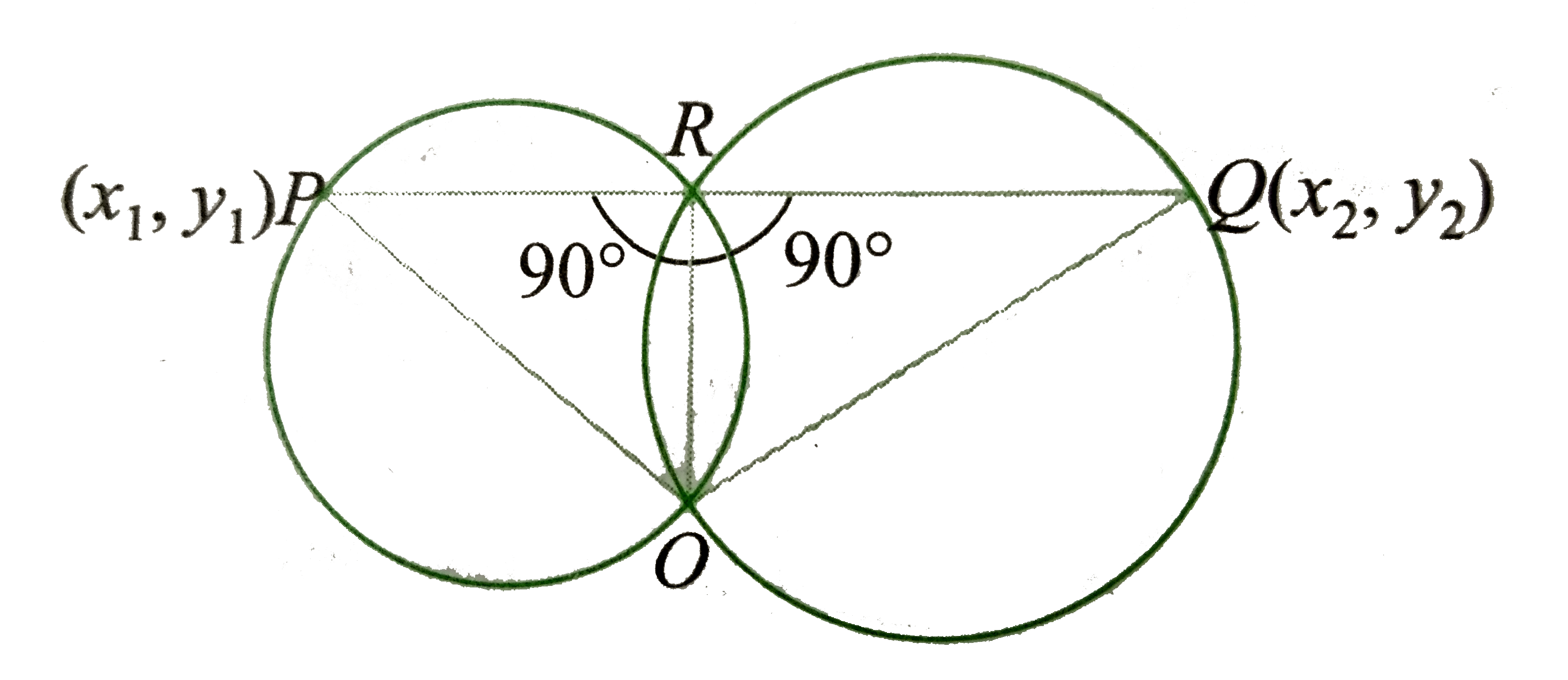The coordinates of two points PandQ are (x1,y1)and(x2,y2)andO is the origin. If the circles are described on OPandOQ as diameters, then the length of their common chord is (a)|x1y2+x2y1|PQ (b) |x1y2−x2y1|PQ |x1x2+y1y2|PQ (d) |x1x2−y1y2|PQ
|x1y2+x2y1|PQ
|x1y2−x2y1|PQ
|x1x2−y2y1|PQ
|x1x2+y2y1|PQ
The correct Answer is:2
OR=2×area of ΔOPQPQ
=2×∣∣12(x1y2−x2y1)∣∣PQ=|x1y2−x2y1|PQ

Topper's Solved these Questions
- CIRCLE Book:CENGAGE ENGLISHChapter:CIRCLE Exercise:Multiple Correct Anser Type
Explore 29 Videos
- CIRCLE Book:CENGAGE ENGLISHChapter:CIRCLE Exercise:Linked Comprehension Type (For Problem 1-3)
Explore 3 Videos
- CIRCLE Book:CENGAGE ENGLISHChapter:CIRCLE Exercise:CONCEPT APPLICATION EXERCISE 4.20
Explore 1 Video
- BINOMIAL THEOREMBook:CENGAGE ENGLISHChapter:BINOMIAL THEOREMExercise:Matrix
Explore 4 Videos
- CIRCLESBook:CENGAGE ENGLISHChapter:CIRCLESExercise:Comprehension Type
Explore 8 Videos
Similar Questions
The coordinates of two points PandQ are (x1,y1)and(x2,y2)andO is the origin. If the circles are described on OPandOQ as diameters, then the length of their common chord is |x1y2+x2y1|PQ (b) |x1y2−x2y1|PQ |x1x2+y1y2|PQ (d) |x1x2−y1y2|PQ
View SolutionIf the coordinates of any two points Q1andQ2 are (x1,y1) and (x2,y2), respectively, then prove that OQ1×OQ2cos(∠Q1OQ2)=x1x−2+y−1y2, whose O is the origin.
View SolutionIf O is the origin and P(x1,y1),Q(x2,y2) are two points then OPxOQsin∠POQ=
View SolutionThe coordinates of the ends of a focal chord of the parabola y2=4ax are (x1,y1) and (x2,y2) . Then find the value of x1x2+y1y2 .
View SolutionIf the line segment joining the points P(x1,y1)and Q(x2,y2) subtends an angle α at the origin O, prove that : OP.OQ cosα=x1x2+y1y2.
View SolutionThe length of the common chord of the circles x2+y2−2x−1=0 and x2+y2+4y−1=0, is
View SolutionFind the distance between P(x1, y1)and Q(x2,y2) when i. PQ is parallel to the y-axis ii. PQ is parallel to the x-axis.
View SolutionIf O be the origin and if P(x1,y1)andP2(x2,y2) are two points, the OP1(OP2)sin∠P1OP2, is equal to
View SolutionIf the points P(h,k), Q(x1,y1)and R(x2,y2) lie on a line. Show that: (h−x1)(y2−y1)=(k−y1)(x2−x1).
View SolutionIf the chord of contact of tangents from a point (x1,y1) to the circle x2+y2=a2 touches the circle (x−a)2+y2=a2, then the locus of (x1,y1) is
View Solution